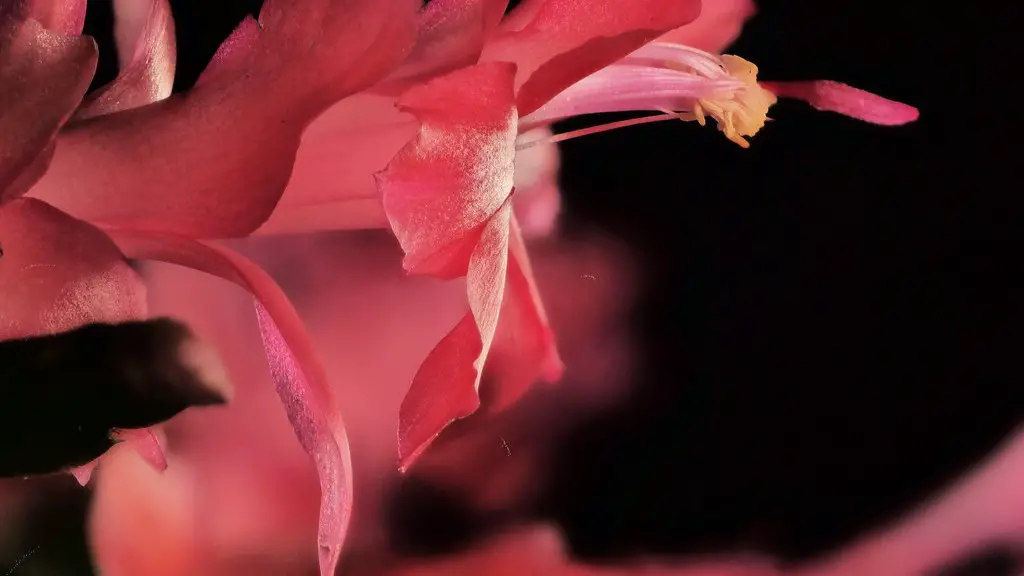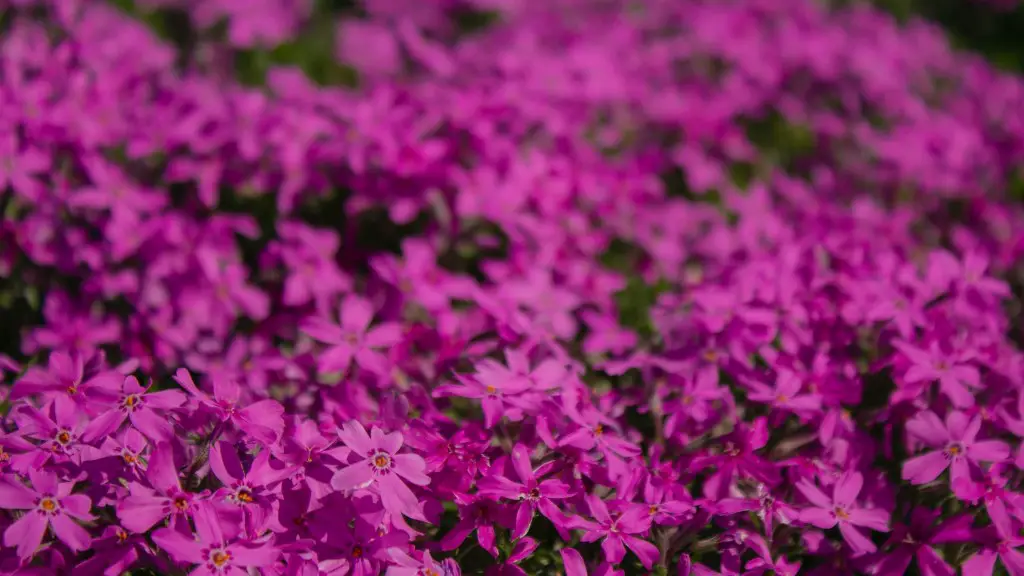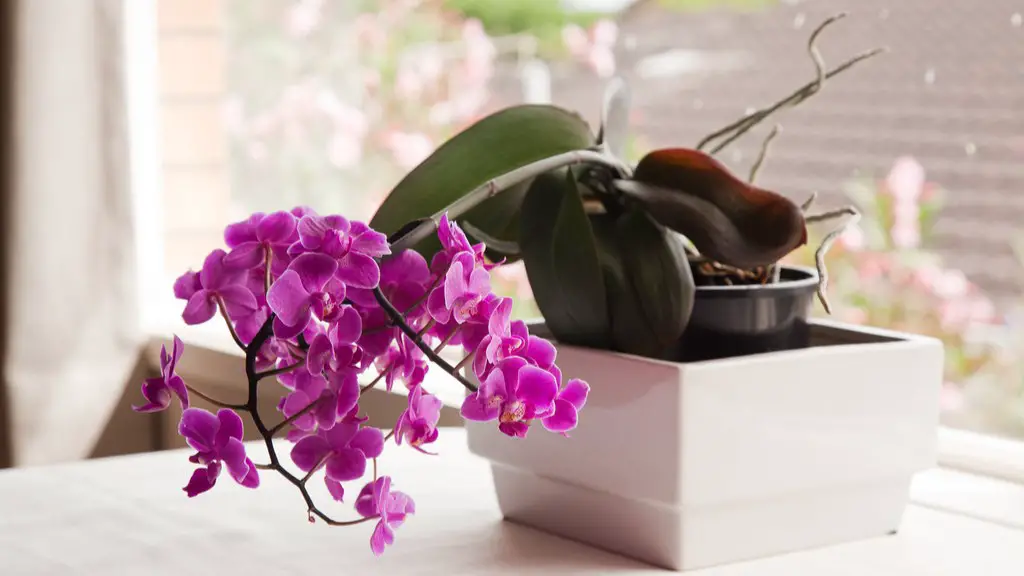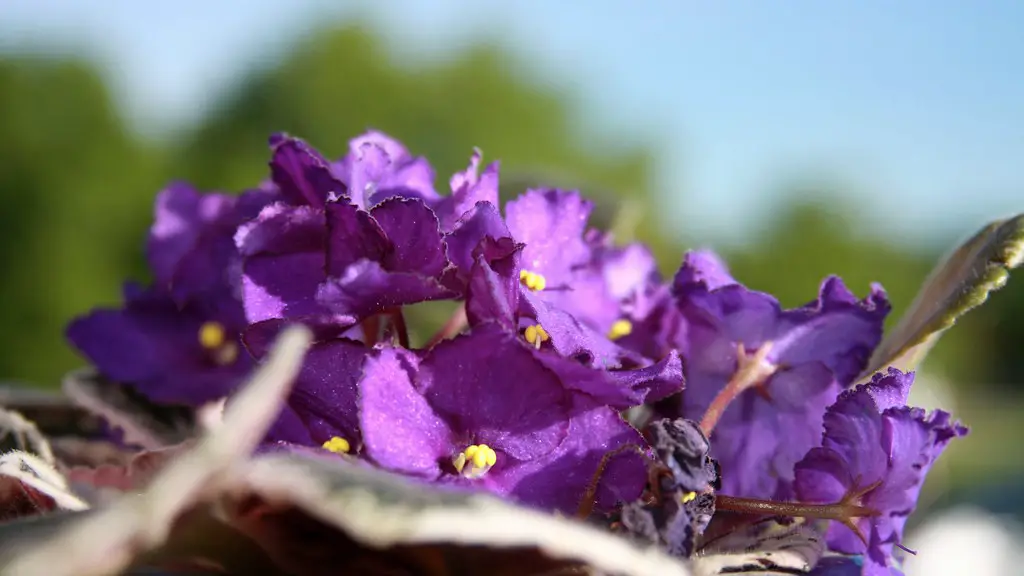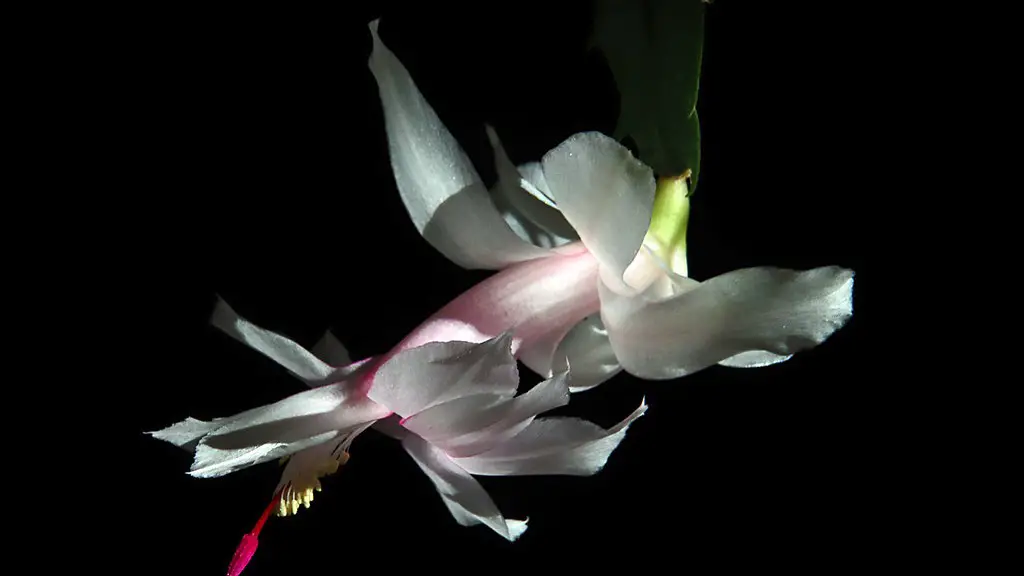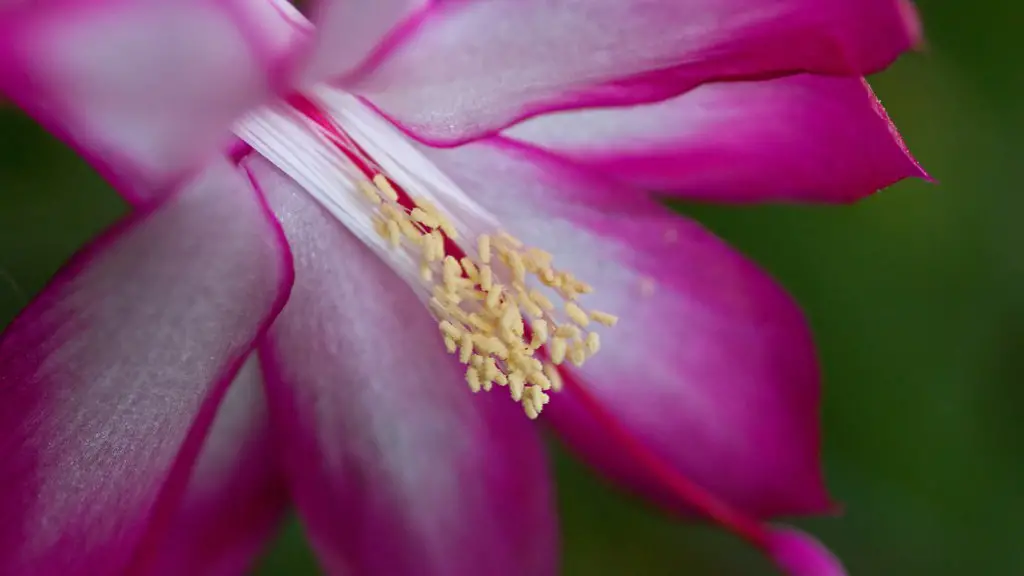A Christmas cactus is a tropical plant that can withstand cool temperatures, but not freezing temperatures. The plant originates from the tropical regions of South America, so it is not used to cold weather. The plant can experience damage to its leaves and stems if the temperature drops below 50 degrees Fahrenheit. Christmas cacti are often grown as houseplants because they thrived in household temperatures. The plant does best in bright, indirect sunlight and moist, but not wet, soil.
The Christmas cactus can withstand temperatures as low as 50°F.
At what temperature should I bring my Christmas cactus inside?
To keep your Christmas cactus healthy, it is important to provide a more humid environment, which can be achieved by placing them in a bright bathroom or kitchen. In the summer, you can move them to a shady spot in the garden or an unheated porch, but make sure to bring them back indoors before temperatures get below 50°F (10°C). Additionally, keep them out of direct sunlight to prevent scorching.
If you have a Christmas cactus that has been exposed to cold temperatures, it is important to take care of it properly in order to avoid further damage. Once the cactus is brought inside, make sure to place it in a warm location. Avoid giving it any water until the pads and stems have thawed out completely. Once the cactus is thawed, you can then water it as usual.
How cold can cactus get at night
Some cacti can handle very cold temperatures, as low as 20 degrees below 0 degrees Fahrenheit. These plants may have spines or hairs that keep out frost, or they may expel water (which will make them look slightly deflated) to avoid stem freeze.
Christmas cacti can thrive outdoors during the summer as long as they are in a shady, protected area. Avoid letting the pots sit in water after a heavy rain.
When should I bring my Christmas cactus out of the dark?
To get your forest cactus to bloom for the holidays, start by putting it in a dark closet for 14 hours a night, six to eight weeks before you want it to bloom. Then bring it back out into a bright location during daylight hours. Once buds begin to form, the closet treatment is no longer needed, and the plant should bloom beautifully for the holidays.
It is important to keep your Christmas cactus in a temperature range between 70°F and 80°F (21°C to 27°C) to prevent damage to the plant. Unfortunately, this plant is not frost tolerant and will suffer permanent damage if exposed to temperatures below 50°F (10°C) for long periods.
How do you winterize a Christmas cactus?
Christmas cacti are succulent plants that thrive in humid environments. If your home is dry indoors during the winter, place your Christmas cactus on a tray of pebbles or near other plants. Water the plant when the top surface feels dry, and never let it sit in water. Christmas cacti prefer daytime temperatures of 65 to 70 degrees and evening temperatures of 55 to 65 degrees.
If you see your cactus plant has softened tissue, this is the first sign of freeze damage. The tissue will often turn white at first, but over time, the damaged areas of the plant will turn black and decay. The freeze-damaged parts of the succulent will eventually fall off. To prevent further damage, give your plant some extra TLC and move it to a warmer location.
Should I let my Christmas cactus go dormant
It is important to let the top two or three inches of soil dry out between waterings in order to help Christmas cactus go into dormancy. The cactus needs the rest period of dormancy in order to bloom. Christmas cactus now needs to be in darkness for 12-14 hours each day.
Succulents and cacti are both plants that are adapted to living in dry, arid environments. As such, they are very sensitive to changes in temperature. In general, they do best in temperatures ranging from 40-80°F. While they can tolerate minor fluctuations outside of this range, any fluctuation of 5° or more can cause irreversible damage.
During the winter months, it is important to make sure that your succulents and cacti are protected from any drastic temperature changes. If possible, keep them in a room that is relatively warm and humid. If the temperature does drop below freezing, make sure to move them inside so that they don’t experience any temperature shock.
In the summer months, make sure to protect your plants from the heat. If possible, keep them in a cool, shady spot. If the temperature gets too hot, they may start to wilt and their leaves may begin to scorch.
Overall, it is important to be aware of the effects that temperature can have on succulents and cacti. By understanding how they respond to temperature changes, you can help to ensure that they stay healthy and happy all year round.
Can cactus survive 45 degrees?
Succulents are a type of plant that can survive in harsher climates than most other plants. They are able to take temperatures from 45°F to 85°F without complaint, as long as they are dry. There are even cacti that survive outside all year long in Canada and Alaska. Succulents don’t care for stuffy environments, especially when they are wet.
Overwatering is a risk of cactus care in every season, but it is especially a risk in the winter. As a rule, you should let the soil dry out completely in between waterings to avoid overwatering. If you see your cactus starting to pucker or harden, that’s a sign its water reserves are running low, and you should water more often.
Where is the best place to put a Christmas cactus in your house
Holiday cacti are a type of cactus that grow best in partial shade. They should be placed in a location with a temperature between 70° and 80℉.
To encourage bud set, provide bright light, temperatures between 55 F and 65 F, and 13 hours or more of continuous darkness each day. This will encourage the plant to set buds for the winter holiday season. Long nights should be started in late September or October and continued for eight weeks.
Can you break off a piece of Christmas cactus and plant it?
Propagating a Christmas cactus is a relatively easy process. Simply take cuttings of one to four segments and let them sit in a cool, dry place for two to four days. Plant the cuttings an inch deep in new soil, preferably a sand/peat mix. Water sparingly until roots or new growth develop, then water as normal.
Dropping buds can be a result of overwatering, temperature extremes or lack of light. Your plant was given special treatment to make it bloom at Christmas, and it was provided with perfect growing conditions during this time. Somewhere in transit, or perhaps in your home, it encountered less than ideal conditions.
Warp Up
The coldest temperature a Christmas cactus can withstand is 50 degrees Fahrenheit.
Although a Christmas cactus can withstand a wide range of temperatures, from 50 to 95 degrees Fahrenheit, it thrives in cooler weather and may suffer if exposed to temperatures below 50 degrees for an extended period of time. So, if you’re looking to keep your Christmas cactus happy and healthy, aim for temperatures on the cooler side.
